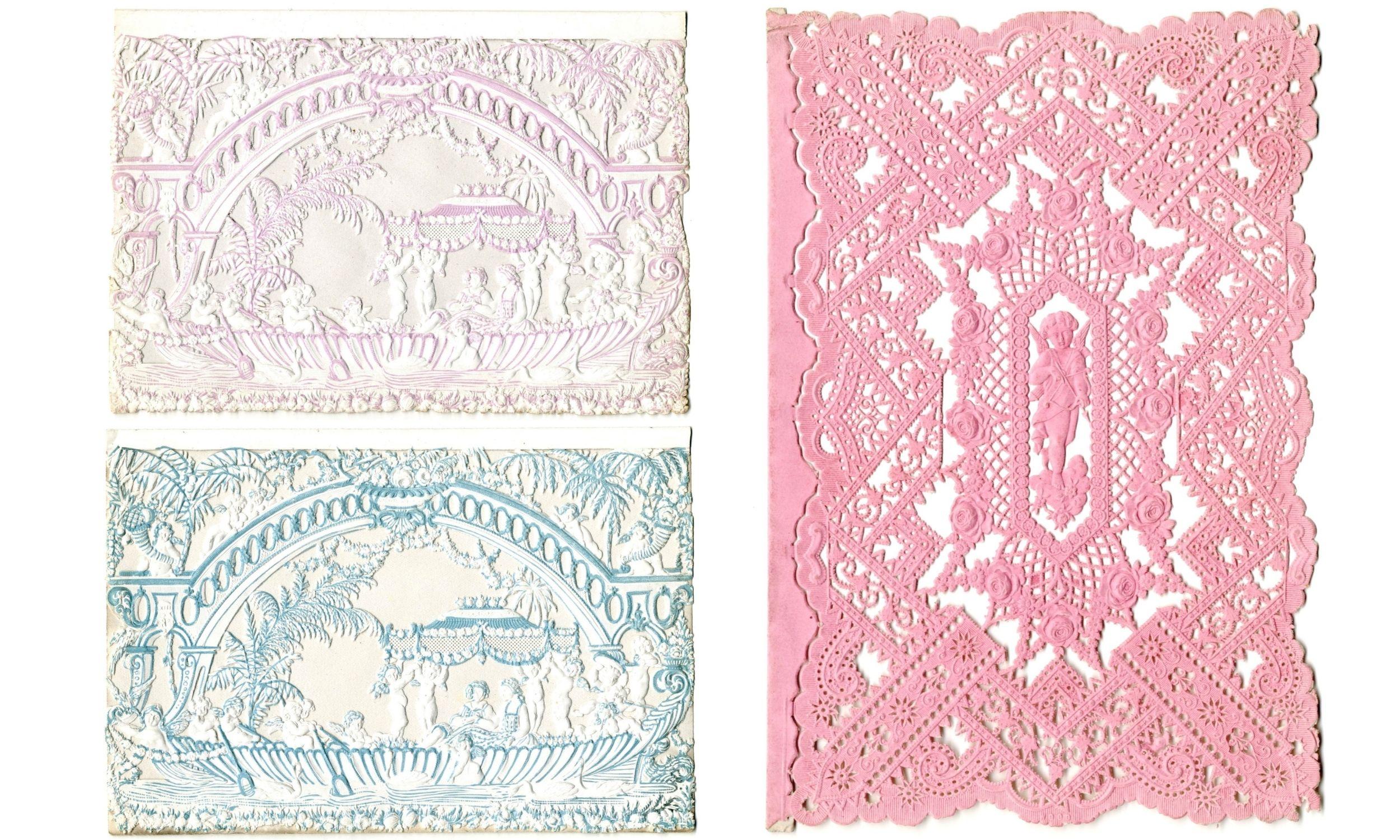Victorian Greeting Card Lace Paper
February 1, 2022
This month’s featured Artifact of the Month is a selection of embossed lace papers collected by Jonathan King, a prominent Victorian stationer, that dates from the 1860s (#6090, 6095, 6096). King was famous for building elaborately layered cards using lace paper and illustrations known as scraps. Intricate patterns, flowers, cherubs, and young women like those portrayed in these cards were popular subjects for Valentine’s Day. The artifacts in our collection (#6090–6118) are incomplete cards, consisting primarily of the foundational lace layer with its die-cut design and some basic color shading.
During the Victorian period, the sending of valentines became ubiquitous due to a variety of factors. In terms of changing technologies, industrialization affected stationery creation through the development of machines for die cutting, embossing, and chromolithography. Die cutting and embossing machines allowed manufacturers to create replicable lacy designs on fine paper while chromolithography, a method of multi-color printing, enabled them to easily ink and print copies of illustrations. These innovations led to mass production and allowed consumers to purchase inexpensive valentines, the materials to make their own, and even sentimental verses to copy down for their own ends. The establishment of the Uniform Penny Post in 1840 was also significant because it reformed the postal service and standardized postage price throughout the United Kingdom. This meant that sending valentines – and correspondence of all kinds – became much more accessible to the increasingly literate population, to the point that Vinegar Valentines were also popular. These were anonymously sent cards that humorously insulted the receiver, especially in terms of romantic rejection or offense of personal quirks. Unfortunately, due to the unflattering and often crude nature of these valentines, very few have survived in comparison to the plethora of sweet cards like those in our collection.
Category: Archival Materials
Region of Origin: European
Keywords:
Ephemera

